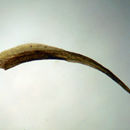Comments
provided by eFloras
Ditrichum flexicaule in the broad sense (including D. gracile) is exceedingly variable in morphology, not only in North America (A. J. Grout 1928-1940, vol. 1, part 1; H. A. Crum and L. E. Anderson 1981) but throughout the world (R. D. Seppelt 1982; A. A. Frisvoll 1985). While many workers have treated the variation and the described variant taxa as one highly polymorphic species (Crum and Anderson; M. F. V. Corley et al. 1981), others (Frisvoll; E. Nyholm 1986+, fasc. 1; I. Novotny 1996) have recognized two principal entities, D. flexicaule and D. crispatissimum (= D. crinale (Taylor) Kuntze). We have followed this latter interpretation. A comprehensive molecular analysis of the group would be highly desirable. Crum and Anderson related all variation in habit and microscopic details to environmental conditions, particularly shade and moisture. Frisvoll differentiated two taxa largely on the basis of gametophytic features. Notwithstanding the considerable variability exhibited by these taxa, we also consider them distinct. While often found infertile, D. flexicaule is more commonly found with sporophytes than is D. gracile. Both are calciphiles.
- license
- cc-by-nc-sa-3.0
- copyright
- Missouri Botanical Garden, 4344 Shaw Boulevard, St. Louis, MO, 63110 USA
Description
provided by eFloras
Plants medium-sized, 2–3 cm high, green or yellowish green, in loose tufts. Stems erect, simple or dichotomously branched, sparsely radiculose at base. Leaves 2.5–3.6 mm long, contorted when dry, erect-patent
when moist, lanceolate, abruptly narrowed from an oblong-ovate base to a slender, somewhat canaliculate acumen; margins plane, entire nearly throughout; costa shortly excurrent; upper leaf cells rounded quadrate to short-rectangular, lower cells short-rectangular to rectangular, 6–8 µm × 10–13 µm, juxtacostal cells more elongate, 6–8 µm × 13–26 µm, thin-walled, shoulder cells rounded-quadrate, 7–8 µm × 8–13 µm, becoming thick-walled; sometimes with 2–3 rows of linear, pellucid cells at the basal margins. Dioicous. Sporophytes not seen.
- license
- cc-by-nc-sa-3.0
- copyright
- Missouri Botanical Garden, 4344 Shaw Boulevard, St. Louis, MO, 63110 USA
Description
provided by eFloras
Plants usually in dense tufts, green to brownish green, dull. Stems 1-4 cm, usually tomentose prox-imally, sometimes only slightly so, ± matted together. Leaves stiff to flexuose, rarely ± falcate, to ca. 3 mm, from an ovate to elongate-ovate, sheathing base contracted rather suddenly to the subula, lamina 1-stratose; margins entire or very weakly denticulate at the apex, often 2-stratose distally on the margins; costa occupying 1/4-1/3 width of the leaf base, ± convex abaxially, in section with weakly defined adaxial and abaxial stereid bands; cells of the subula short-rectangular to elongate-rhomboid, becoming more elongate in the base, cells adjacent to the costa with only weakly nodulose longitudinal walls, narrower towards the margins. Specialized asexual reproduction unknown. Sexual condition dioicous; male plants shorter than female plants. Seta dark red-brown, to 2 cm, ± flexuose. Capsule ± erect, dark brown, cylindric, to 1.5 mm; operculum high- conic to conic-rostrate, 0.7-0.9 mm; peristome teeth 2-fid nearly to the short basal membrane, densely spiculose-papillose, light brown proximally, pale distally, 300-450 µm. Spores 9-12 µm, finely papillose.
- license
- cc-by-nc-sa-3.0
- copyright
- Missouri Botanical Garden, 4344 Shaw Boulevard, St. Louis, MO, 63110 USA
Distribution
provided by eFloras
Distribution: China, Russian Far East, Europe, and North America.
- license
- cc-by-nc-sa-3.0
- copyright
- Missouri Botanical Garden, 4344 Shaw Boulevard, St. Louis, MO, 63110 USA
Habitat
provided by eFloras
Habitat: on soil or rocks.
- license
- cc-by-nc-sa-3.0
- copyright
- Missouri Botanical Garden, 4344 Shaw Boulevard, St. Louis, MO, 63110 USA
Synonym
provided by eFloras
Cynodontium flexicaule Schwägrichen, Sp. Musc. Frond. Suppl. 1(1): 113, plate 29. 1811
- license
- cc-by-nc-sa-3.0
- copyright
- Missouri Botanical Garden, 4344 Shaw Boulevard, St. Louis, MO, 63110 USA
Comprehensive Description
provided by North American Flora
Ditrichum flexicaule (Schwaegr.) Hampe, Flora 50 : 182. 1867
Cynodontium Jlexicaule Sch-waegr. Supp. 1': 113. 1811.
Trichoslomum flexicaule Bruch & Schimp. in B.S.G. Bryol. Eur. (18-20:) Trichost. 15. 1843.
Trichoslomum flexicaule densum Bruch & Schimp. in B.S.G. Bryol. Eur. (18-20:) Trichost. 15. 1843.
Leptolrichum flexicaule Hampe; C. Mull. Syn. 1: 449. 1848.
Lepiotrichum flexicaule densum Schimp. Syn. 145. 1860.
Ditrichum flexicaule densum Braithw. Brit. Moss-Fl. 1: 101. 1881.
Distichium Macounii C. Miill. & Kindb.; Macoun, Cat. Can. PI. 6: 40. 1892.
Leptolrichum flexicaule brevifolium Kindb.; Macoun, Cat. Can. PI. 6: 46. 1892.
Ditrichum brevifolium Paris. Index Bryol. 391. 1895.
Ditrichum flexicaule bretifolium Barnes, Bull. Univ. Wise. Sci. 1: 273. 1897.
Ditrichum elatum Kindb. Eur. & N. Am. Bryin. 181. 1897.
Plants variable, either lax or densely tufted and matted with brown tomentum; stems' often 8-10 cm. high, erect and crowded or lax and flexuose; branches slender, often 1 cm. long; leaves erect or spreading, twisted, seldom secund, 1-3 mm. long, the base broader, clasping, tapering into a slender, concave awn, the apex entire or slightly toothed; basal cells rounded or irregular, often rectangular; alar cells occasionally larger, rarely pitted or elongate next the broad costa; perichaetial leaves longer, broader and hyaline at the base, tapering into a slender, subulate, entire awn. Dioicous: seta 1-2 cm. long, red below, paler above and twisted: capsule erect, 2-2.5 mm. long, broadest at the base; mouth small, bordered by darker cells; lid small, conic; margin serrate; annulus large, of 3 rows of cells; peristome red at the base, paler above, the basal membrane short; teeth slender, papillose, bifid to the base, fragile and fugacious: spores smooth, 8-12 /i in diameter, maturing in spring.
Ditrichum flexicaule densum has shorter densely tomentose stems with smaller leaves, anc D. flexicaule brevifolium is a still smaller plant with short acute not subulate leaves, entire with small quadrate basal cells.
Typb locality: Switzerland.
Distribution: Woods and banks, alpine and subarctic regions; Greenland and Nova Scotii to Minnesota. British Columbia, and Alaska; also in northern Europe, Asia, and Africa.
- bibliographic citation
- Albert LeRoy Andrews, Elizabeth Gertrude Britton, Julia Titus Emerson. 1961. SPHAGNALES-BRYALES; SPHAGNACEAE; ANDREAEACEAE, ARCHIDIACEAE, BRUCHIACEAE, DITRICHACEAE, BRYOXIPHIACEAE, SELIGERIACEAE. North American flora. vol 15(1). New York Botanical Garden, New York, NY

